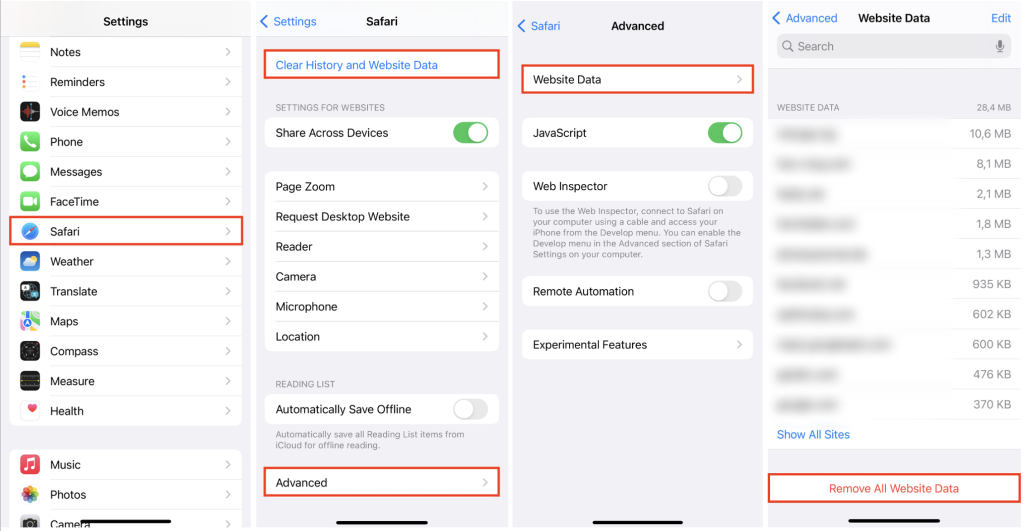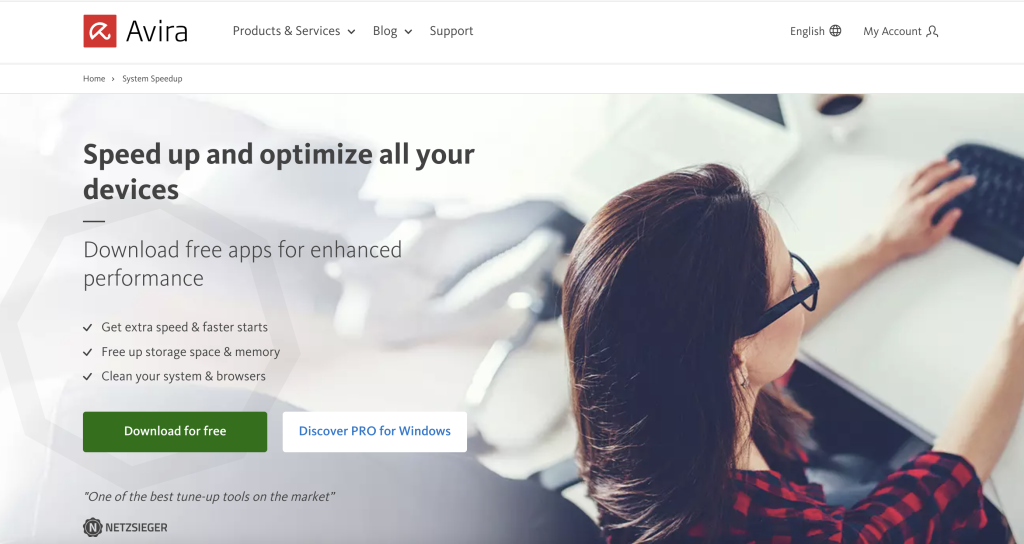Once an iPhone, always an iPhone. At least that’s what most users of Apple smartphones say. But many are also quick to notice that as soon as a new iPhone comes out, older versions slow down noticeably, forcing users to fork out for the latest model. Apple itself even admits that it’s company policy to throttle older devices as part of iOS system updates. This practice, which became public around 2020, continues unabated — even though this resulted in the Californian company getting hit with a 25 million euro fine in France.
Nevertheless, you can still give your “old” iPhone a new lease of life with a thorough iPhone clean up. Read on to learn how to clean up your iPhone easily, quickly, and safely — and put the zip back in to it.
What happens when you overload your iPhone?
Overloading your iPhone can have several unpleasant consequences:
- You may find yourself being unable to save information or install apps, plus they may stop refreshing.
- Your iPhone and the apps you use will slow down — or in the worst case, stop working.
- The screen may also become unresponsive because too much data and too many apps have overloaded your iPhone.
Act and follow our iPhone clean-up tips for clearing out and speeding up your device before “Storage Almost Full” pops up on your iPhone.
Which files hog your storage and overload your iPhone?
With earlier versions of iOS (prior to iOS 10.3), the operating system itself consumed a huge amount of storage. Although this is no longer an issue, owners of older models with just 16 GB of storage will find that their iPhone will quickly run out of free space.
Many iPhone users find themselves using most of their storage for media like photos, videos, and audio files. And it’s only natural that they want to keep many of these personal files on the device itself.
However, what most iPhone users don’t know is that apps also clutter up their smartphone with online data. For example, using the Instagram app puts a huge strain on your iPhone’s storage — unlike some other apps that now offer a “clean up” function in their settings such as WhatsApp. The Safari app also stores an enormous amount of data in the cache when you’re surfing the internet.
There’s also a third category of data which can sap your iPhone’s storage: Other data — a veritable smorgasbord of system files, caches, Siri voices, logs, updates, and more that can quickly add up to several gigabytes and which can of course make your iPhone very slow.
By the way, streaming music and videos is one of the main culprits that can bloat the “other” category. That’s because streaming services require a large cache to playback content.
How can I tell which files are eating up my iPhone’s storage?
Newer generation iPhones actually delete the cache of the various apps automatically — or at the latest when you restart your device. Despite that, this might not happen correctly if the apps have a bug, i.e. an error.
You can see how much storage the apps on your iPhone are using simply by opening the Settings app, tapping General, and then selecting iPhone Storage.
You’ll now be able to see which apps are the biggest storage hogs. Be patient, though, as it may take a few seconds until the breakdown of storage that each data category occupies is displayed in the bar graph at the top of the screen. Swipe up and you’ll see a list of all your apps with the amount of space they consume. You can then decide if and where you want to act and clean the cache by tapping the app and either offloading (this deletes the app but keeps its documents and data) or deleting it.
Put the zip back into your iPhone by checking the cache, documents, and apps
There are a few ways to clean up your iPhone’s storage. Read on for a few handy hints on how to speed up your iPhone by cleaning it up.
However, before you do, back up your iPhone manually even though your iOS smartphone creates a back up each time you restart it.
To create the iCloud backup, first make sure your Wi-Fi connection is stable and then proceed as follows:
- Open the Settings app.
- Tap your Apple ID account avatar.
- Now tap iCloud, then iCloud Backup.
- When you now tap Back Up Now, your iPhone will save an encrypted backup in iCloud.
See the Apple Support website for further information.
Free up space on your iPhone: Delete unnecessary media
To start with, we recommend going through your data-hungry photos, videos, audio files, and messages and checking which ones you actually want to keep on your iPhone.
- If, for instance, you’ve edited any photos, you’ll still find the rather large original copy on your iPhone — which is why you’re likely to find several versions of the same photo on your device, whereas perhaps only one of them is what you were hoping to capture in the first place.
- Remember that little New Year’s video from four years ago; fun videos that were watched once, shared, and never watched again: All these sorts of video files are also worth going through carefully and deleting where necessary.
- By the way, don’t worry if you delete any video or audio files you’ve bought as they still “belong” to you even if you do remove them from your iPhone.
Top tip: Your iPhone always records very hi-res videos. In many cases, recording at a lower resolution is perfectly fine (to change the resolution, open the Settings app, locate and tap Camera, then customize the setting under Record Video).
Remove unwanted apps during your iPhone clean up
You probably have trial versions of paid apps that you didn’t want to buy after the free period lapsed, or gaming apps you lost interest in after a short while. As such, it’s worth going through all the apps on your device.
Removing the ones you don’t use can free up a tremendous amount of storage — and make your iPhone run faster.
Empty your browser cache to clean your iPhone
Even with moderate use, Safari and other browser apps store endless amounts of data in the cache — adding to the woes that slow down your iPhone.
Here’s how to clear the browser cache in the Safari app on your iPhone (iPhone 8 and later):
- Open the Settings app, then locate and tap Safari. If you want to delete all the website data and clear the history, simply tap Clear History and Website Data.
- If, however, you want to keep your history, swipe up a bit further until you see Advanced. Tap that, then tap Website Data, followed by Remove All Website Data. Your browsing history will be kept, but the cache will be cleared.

Turn off iPhone system services for a speed bump
They’re called system services, and many of them are turned on by default. However, you’re unlikely to need them to be running all the time. To customize these services, open the Settings app, tap Privacy, then Location Services, and go all the way to the bottom of the list and tap System Services.
If you look at the list of system services, you’ll definitely find one or more services that you don’t want to have on all the time. Here are some examples:
- Motion Calibration & Distance approximately measures the distance you’ve covered or steps you’ve taken. However, if you use a fitness tracker or a smart watch, you may not need to count your steps twice.
- Cell Network Search sends information to Apple about cell network connections.
- If you use smart home devices, the HomeKit system service is required. If you do not use such devices, you can turn off this service.
- Compass Calibration, as the name suggests, is the system service that calibrates the compass.
- The Find My iPhone system service sends information about your current location to iCloud to locate your iPhone.
- With Share My Location, you can send your current location via WhatsApp, Messages, and other messaging apps — something you may only want to do rarely.
- Setting Time Zone automatically sets the time zone based on your location. It makes sense to leave this turned on if you travel frequently across different time zones, but only really if you do.
- Significant Locations saves your frequently visited locations.
- With Analytics & Improvements [found under Privacy], iOS sends your usage data anonymously to Apple to improve its products and services.
- With Routing & Traffic, Apple collects traffic data with your help to build a database.
- Improve Maps uses your location information to help improve Maps.
End background refreshing for apps when cleaning up your iPhone
The apps on your iPhone also work in the background, refreshing themselves. This can be useful and really practical in many cases. The Weather app, for example, regularly downloads the latest data so that when you open it you get information about the weather that is correct for the time of day. Likewise, messaging apps such as WhatsApp refresh chats in the background — and so the list goes on.
All these background app refreshes running continuously in the background consume a lot of battery power, impact speed — and slow down your iPhone.
As such, it’s a good idea to stop background refreshing for those apps that you don’t use every day. Here’s how:
- Open the Settings app and tap General.
- Now swipe up and tap Background App Refresh.
- Here you can disable background app refreshing app by app by swiping the respective slider.
- If you want to stop background refreshing altogether, choose Off under Background App Refresh.
Restrict Spotlight searches
Spotlight search is a very useful feature that lets you search all the apps and files on your iPhone in one go with a single request. It’s especially handy if you can’t remember exactly which app contains the information you’re after.
While you can’t turn off the search feature entirely, you can choose which apps to limit the search to — and in turn speed up your iPhone.
- To do so, open the Settings app and tap Siri & Search.
- You’ll find a list of all your apps in the lower section of the menu. If you tap a particular app, you can use the sliders to turn off the options Show App in Search and Show Content in Search.
Turning off Siri makes your iPhone faster
Many iPhone users don’t want to do without their voice assistant, because Siri can actually make life much easier in many situations. This is all thanks to Siri’s ability to understand hundreds of commands, run processes, and answer questions. Although very helpful, this voice assistant consumes a lot of power and slows down your iPhone.
If you don’t actually use Siri, turning off this service can make your iPhone run faster. Here’s how:
- Open the Settings app and tap Siri & Search.
- In the Ask Siri section of the menu, use the slider to customize various options such as Listen For “Hey Siri” or Allow Siri When Locked.
App updates help clean up your iPhone
You should always keep apps on your iPhone up to date and install any developer updates as soon as possible. That’s because these updates often also fix bugs, for a better performing, faster, and more secure iPhone.
Optimization apps can help you clear out your iPhone
The tips we’ve mentioned can help you clean up and speed up your iPhone. That said, apps are available like Avira Free Optimizer that make it a breeze to free up space and clean up your iPhone.
Even the freeware version of Avira Free Optimizer can help you put the zip back into your iPhone and get it starting faster. This app can help you free up more storage and memory — and it’ll also assist you with cleaning your system and browser.















